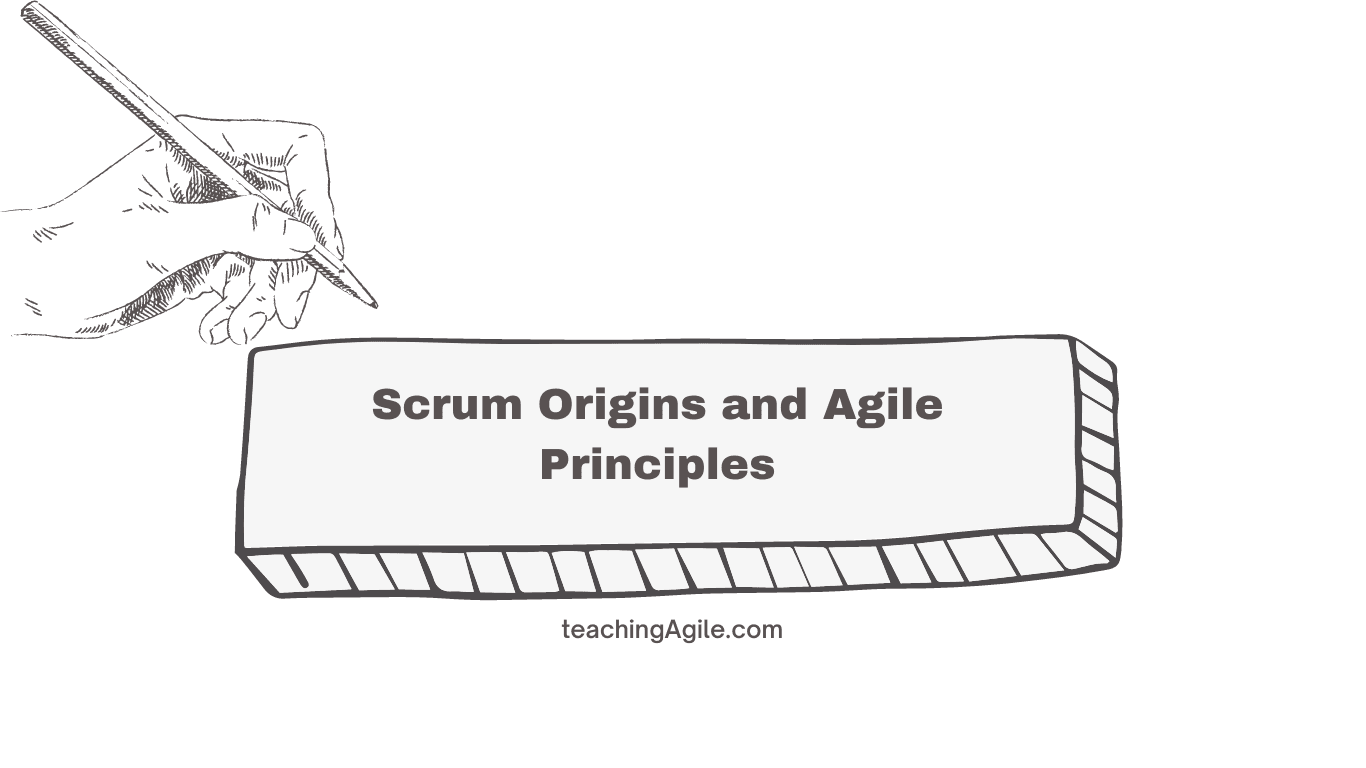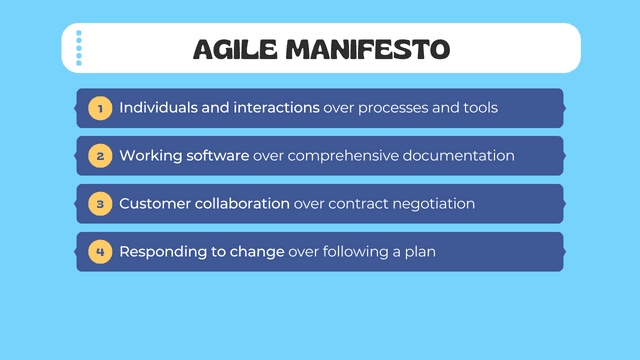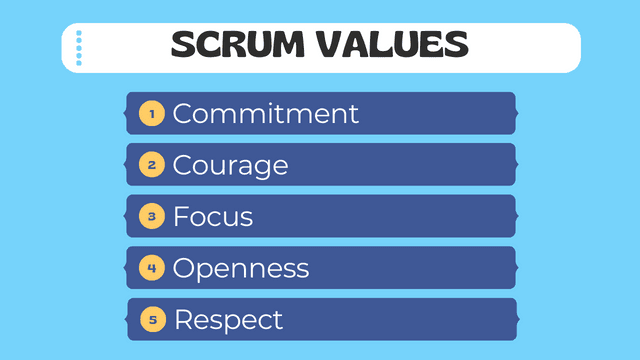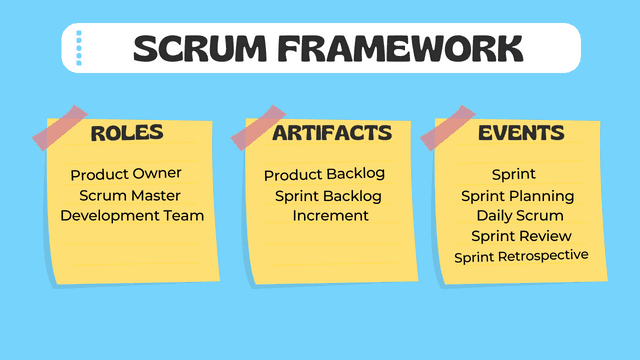
Scrum Origins and Agile Principles: The Foundations of Agile Project Management
 Scrum Origins and Agile Principles
Scrum Origins and Agile Principles
Scrum's origins trace back to 1986 when Hirotaka Takeuchi and Ikujiro Nonaka published "The New New Product Development Game" in Harvard Business Review.
They introduced a flexible, iterative, collaborative product development approach inspired by rugby's scrum formation.
Ken Schwaber (opens in a new tab) and Jeff Sutherland (opens in a new tab) formalized Scrum as a software development framework in the early 1990s.
They presented their unified framework at the 1995 OOPSLA conference.
The first full implementation occurred at Easel Corporation in 1993.
Scrum predates the Agile Manifesto (2001) but perfectly embodies its principles.
Both emphasize individuals and interactions, working software, customer collaboration, and responding to change.
Today, Scrum remains the world's most popular Agile framework, used across industries from software to manufacturing.
Understanding Scrum's historical foundation reveals why its principles work so effectively.
Key characteristics: Scrum evolved from manufacturing and product development research, not software engineering.
The 1986 Takeuchi-Nonaka paper studied successful product teams at Honda, Canon, and Fuji-Xerox.
They identified patterns: cross-functional autonomy, self-transcending goals, overlapping development phases, subtle control, organizational transfer of learning, and "built-in instability" that forces iteration.
Schwaber and Sutherland adapted these manufacturing insights for complex software projects.
They created the Scrum framework with defined roles, events, artifacts, and rules.
Critical insight: Scrum's effectiveness stems from empirical foundations dating to 1986 manufacturing research.
It operationalizes decades of product development learning into practical framework.
The Agile Manifesto later articulated values Scrum already embodied.
This historical context explains why Scrum emphasizes self-organizing teams, frequent inspection, adaptation, and collaboration - principles proven effective long before software adoption.
Quick Answer: Scrum History Timeline at a Glance
| Year | Milestone | Significance |
|---|---|---|
| 1986 | Takeuchi & Nonaka publish "The New New Product Development Game" | Introduced iterative, cross-functional product development inspired by rugby scrum |
| 1993 | First Scrum implementation at Easel Corporation | Jeff Sutherland, John Scumniotales, Jeff McKenna apply Scrum to software |
| 1995 | Scrum presented at OOPSLA conference | Ken Schwaber & Jeff Sutherland formally introduce unified Scrum framework |
| 2001 | Agile Manifesto created | 17 experts articulate values Scrum already embodied; Scrum becomes Agile framework |
| 2002 | Scrum Alliance founded | Mike Cohn, Esther Derby, Ken Schwaber create community for Scrum education |
| 2009 | Scrum.org launched | Ken Schwaber creates alternative organization focused on knowledge validation |
| 2010 | First Scrum Guide published | Schwaber & Sutherland codify definitive Scrum framework (updated regularly) |
| 2020 | Scrum Guide 2020 revision | Simplified to single "Scrum Team" (removed "Development Team"), emphasized Product Goal |
Table Of Contents-
Scrum Origins
Scrum's origins can be traced back to a 1986 paper published by Hirotaka Takeuchi and Ikujiro Nonaka in the Harvard Business Review (opens in a new tab), titled The New New Product Development Game.
The authors introduced the concept of a highly flexible, iterative, and collaborative approach to product development.
This approach was inspired by Rugby's scrum formation, where players huddle together to restart the game after a minor violation.
In the early 1990s, Jeff Sutherland (opens in a new tab) and Ken Schwaber (opens in a new tab) independently developed their own Scrum frameworks, later merging their ideas to create a single, unified Scrum framework.
Ken and Jeff presented their Scrum framework at the 1995 Object-Oriented Programming, Systems, Languages & Applications (OOPSLA) conference, marking the formal introduction of Scrum to the world.
The first full implementation of Scrum took place in 1993 when Jeff Sutherland, John Scumniotales, and Jeff McKenna implemented it at the Easel Corporation (opens in a new tab). They applied Scrum principles to software development projects and achieved significant improvements in productivity and quality.
Scrum is characterized by its focus on collaboration, adaptability, and iterative development.
It emphasizes self-organizing teams, regular feedback, and continuous improvement. The framework consists of specific roles, events, artifacts, and rules that guide the development process.
The Agile Manifesto
 The Agile Manifesto
The Agile Manifesto
In 2001, a group of seventeen software development experts gathered in Snowbird, Utah, to discuss lightweight development methods. This meeting resulted in the creation of the Agile Manifesto, which outlines the core values and principles of Agile methodologies, including Scrum.
The Agile Manifesto consists of four values:
- Individuals and interactions over processes and tools
- Working software over comprehensive documentation
- Customer collaboration over contract negotiation
- Responding to change over following a plan
These values emphasize the importance of people, collaboration, and adaptability in software development.
Scrum Values
 Scrum Values
Scrum Values
In addition to the Agile Manifesto, Scrum is built on five key values that guide the behavior of Scrum teams:
- Commitment - The team is dedicated to achieving the goals of the project and delivering high-quality results.
- Courage - Team members have the courage to face challenges, make tough decisions, and continuously improve.
- Focus - The team concentrates on the work at hand, prioritizing tasks and minimizing distractions.
- Openness - Team members are transparent about their work, progress, and any obstacles they face.
- Respect - Team members appreciate and value each other's unique skills and contributions.
By embracing the Agile principles and Scrum values, teams can work together more effectively, adapt to changing requirements, and deliver valuable products to their customers.
In the next lesson, we will dive deeper into the roles within a Scrum team, including the Product Owner, Scrum Master, and Development Team.
Scrum Framework
 Scrum Framework
Scrum Framework
Scrum is an iterative and incremental Agile framework designed to manage complex product development. It emphasizes collaboration, flexibility, and continuous improvement. The Scrum framework consists of:
- Roles: Product Owner, Scrum Master, and Development Team
- Artifacts: Product Backlog, Sprint Backlog and Increment
- Events: Sprint, Sprint Planning, Daily Scrum, Sprint Review, Sprint Retrospective
These components work together to enable a Scrum team to plan, develop, and deliver high-quality products iteratively.
The Impact of Scrum and Agile on Project Management
The adoption of Scrum and Agile principles has significantly impacted the project management landscape. Traditional, plan-driven methods are being replaced by flexible, iterative approaches that focus on delivering value to the customer early and often.
Scrum, in particular, has become one of the most widely used Agile frameworks, providing a practical methodology that aligns with Agile principles.
Organizations using Scrum have reported improvements in product quality, customer satisfaction, team morale, and project visibility.
Conclusion
Understanding the origins of Scrum and its foundation in Agile principles provides valuable context for anyone involved in Agile project management. As we've seen, Scrum and Agile principles are intrinsically linked, with Scrum operationalizing these principles in a practical and effective way.
Whether you're new to Agile or a seasoned Scrum practitioner, appreciating the connection between Scrum and Agile can help you better leverage these powerful tools to deliver high-quality products that meet your customer's needs.
 Scrum Framework - A Motivational Quote
Scrum Framework - A Motivational Quote
Quiz on Scrum Origins and History
Your Score: 0/15
Question: When was the foundational paper that inspired Scrum published in Harvard Business Review?
Frequently Asked Questions (FAQs) / People Also Ask (PAA)
What does Scrum stand for?
Why is Scrum called Scrum?
Why Scrum in Agile?
Why Scrum over Kanban?
Why Scrum works?
Who created Scrum?
Which came first, Scrum or Agile?
Origin of Scrum framework?
Can Scrum and Kanban be used at the same time?
Is Scrum outdated?
How has Scrum evolved since its creation in the 1990s?
Why did Scrum become more popular than other Agile frameworks like XP or Crystal?
What is the relationship between Lean manufacturing and Scrum's origins?
How did the 2001 Agile Manifesto impact Scrum's adoption?
What role did the software industry crisis of the 1990s play in Scrum's emergence?